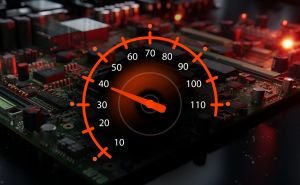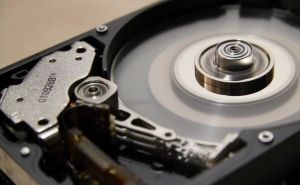 How to diagnose hard drives
How to diagnose hard drives
There are various reasons why you might want to diagnose your hard drive. Some of the most popular motives would be the fact that your hard drive is making unusual noises or your computer isn't running as fast as it used to. Ignoring this type of red flags isn't a great idea as there's a chance you might end up losing the data that's being stored on the affected hard drives.
In a previous article, I showed you how to defrag a hard drive, a task which is usually completed when you notice that your PC is running slow. However, in order to know exactly if the defrag is the actual solution, you would first need to identify the real source for your hard drive problems.
One way to test your hard drives for problems is to use a dedicated software. There are numerous third-party diagnosis programs that provide you with their own sets of tests, are available for free or with a price tag, include user support, etc. Good examples come from tools like HD Tune, SpeedFan or Data LifeGuard Diagnostics.
In this guide, I will show you how to use SpeedFan to diagnose your hard drives. This tool is more than its name implies as, besides helping you check the current fan speeds and temperatures, it can also reveal S.M.A.R.T. info, give you chipset specifications, show CPU usage details, etc. Here's what you need to do to test your hard drive for problems:
Tutorial assets
You will need to download the following software to follow along with this tutorial.
Step 1
Launch SpeedFan on your PC. The program will take a couple of moments to check the current status of your PC.
Step 2
Go to the S.M.A.R.T. panel and check the offered report.
Checking S.M.A.R.T. Info
Optional: You can share the offered report with people from a computer service or someone who knows a few things about repairing hardware components.
Using S.M.A.R.T. info from BIOS
This default solution is accessible to anyone with a desktop PC or a laptop. The reason why I left this information at the end of my article is that the diagnosis being made from BIOS isn't as comprehensive as the one you get from specialized tools. It just offers you S.M.A.R.T. details which aren't quite enough to identify problems with hard drives.
Step 1
Start your computer and hit the F10 key repeatedly until you have the BIOS Setup menu on your monitor.
Step 2
Select the "Hard Drive Self Test" option and wait for the results.
Important: If the test reveals zero problems yet your hard drives still don't work properly, back up your data and take the hardware component to a computer service.
Conclusion
Testing your hard drives for problems is quite straightforward. The real challenge, at least for beginner PC users, is to comprehend the gathered information and to know exactly what to do next. The question is: would you try one of the aforementioned solutions or head straight to a PC repair shop instead? Let us know in the comments section below.
Alternative downloads
-
 CrystalDiskInfo
free
windows
HDD/SSD utility which supports the S.M.A.R.T.
Download
CrystalDiskInfo
free
windows
HDD/SSD utility which supports the S.M.A.R.T.
Download
-
 Data Lifeguard
Diagnostic for Windows
free
windows
This is a Windows version of the Data LifeGuard Diagnostics.
Download
Data Lifeguard
Diagnostic for Windows
free
windows
This is a Windows version of the Data LifeGuard Diagnostics.
Download
-
 SpeedFan
free
windows
Program that monitors voltages, fan speeds and temperatures in computers with hardware monitor chips.
Download
SpeedFan
free
windows
Program that monitors voltages, fan speeds and temperatures in computers with hardware monitor chips.
Download





Comments
Subscribe to comments